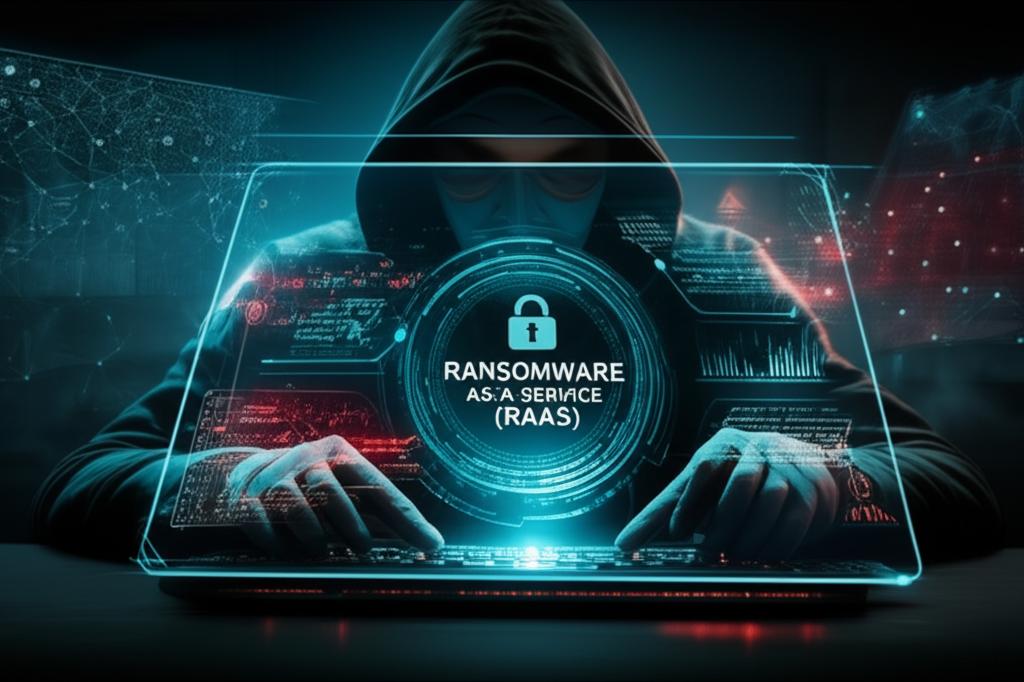The Dangerous Rise of Ransomware as-a-Service (RaaS): Unmasking a Global Cyber Threat
The digital landscape is fraught with evolving threats, and few are as insidious and pervasive as Ransomware as-a-Service (RaaS). This alarming phenomenon has democratized cybercrime, enabling individuals with minimal technical expertise to launch sophisticated ransomware attacks. Understanding Ransomware as-a-Service (RaaS) is crucial for safeguarding digital assets in today’s interconnected world.
What is Ransomware as-a-Service (RaaS)?
Ransomware as-a-Service (RaaS) operates much like legitimate Software as-a-Service (SaaS) models. Instead of subscribing to productivity software, subscribers (known as affiliates) pay for access to pre-developed ransomware tools, infrastructure, and support from the ransomware developers. These developers handle the complex coding, maintenance, and often the payment infrastructure, while affiliates focus on distributing the malware and extorting victims. The profits are then split between the developer and the affiliate, typically with the developer taking a significant percentage. This modular approach significantly lowers the barrier to entry for aspiring cybercriminals.
The Dangerous Business Model of RaaS
The success of RaaS lies in its structured, almost corporate-like operational model:
- Developers: The core creators who build and refine the ransomware code, maintain command-and-control servers, and develop user-friendly interfaces for affiliates.
- Affiliates: Individuals or groups who purchase access to the RaaS platform. Their role involves distributing the ransomware through various vectors like phishing emails, exploited vulnerabilities, or malvertising, and negotiating ransom payments.
- Support & Infrastructure: Many RaaS groups offer customer support, payment processing, and even victim negotiation services, making it a comprehensive package for their criminal clientele.
Why RaaS Poses an Escalating Threat
The rise of RaaS has amplified the volume and sophistication of ransomware attacks for several reasons:
- Lower Barrier to Entry: Non-technical individuals can easily become cybercriminals, broadening the pool of attackers.
- Scalability: The service model allows for rapid deployment of attacks across a wide range of targets.
- Anonymity: The tiered structure provides a layer of plausible deniability for developers, making attribution and prosecution more challenging.
- Constant Evolution: RaaS developers continuously update their malware to evade detection and exploit new vulnerabilities, making defense a moving target.
Protecting Against Ransomware as-a-Service (RaaS) Attacks
Combating the pervasive threat of Ransomware as-a-Service (RaaS) requires a multi-layered cybersecurity strategy:
- Robust Backup and Recovery: Implement a 3-2-1 backup strategy (three copies of data, on two different media, with one copy off-site) to ensure data can be restored without paying a ransom.
- Employee Training: Educate staff about phishing, social engineering, and safe browsing practices, as human error remains a primary attack vector.
- Endpoint Security: Deploy advanced endpoint detection and response (EDR) solutions to identify and neutralize threats before they can execute.
- Network Segmentation: Isolate critical systems and data to limit lateral movement of ransomware within the network.
- Patch Management: Regularly update all software, operating systems, and firmware to patch known vulnerabilities that RaaS operators frequently exploit.
- Incident Response Plan: Develop and regularly test a comprehensive incident response plan to minimize downtime and data loss in the event of an attack.
Conclusion
The dangerous proliferation of Ransomware as-a-Service (RaaS) platforms marks a significant shift in the cyber threat landscape. By commoditizing digital extortion, RaaS has empowered a new generation of cybercriminals, making robust cybersecurity defenses more critical than ever. Organizations and individuals must remain vigilant, proactive, and well-prepared to defend against this relentless and evolving menace.







